
We’re beginning our holiday revelry early this year!
Here’s round up of Holiday images.

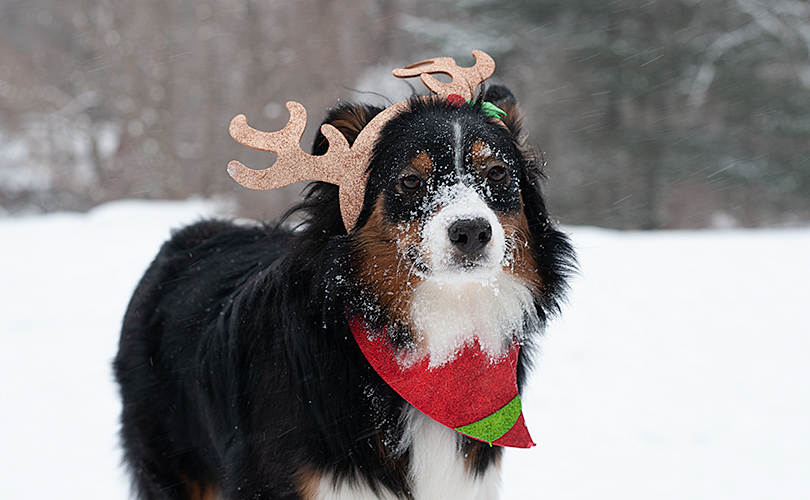
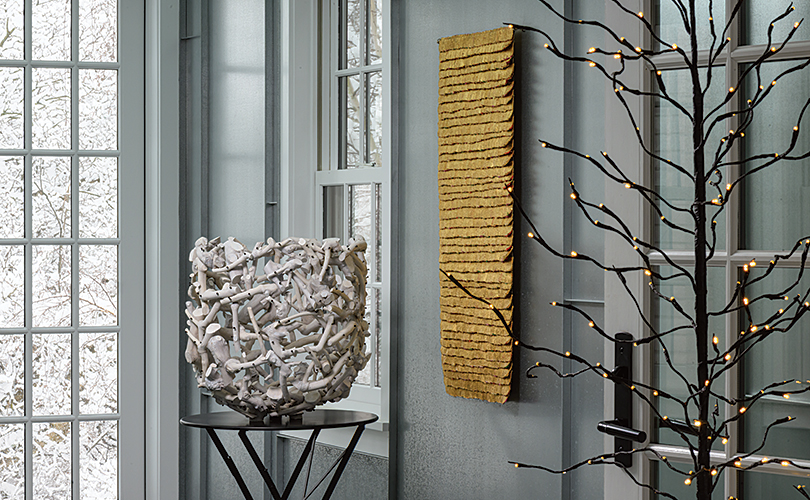

Wishing you all a most enjoyable holiday season!

We’re beginning our holiday revelry early this year!
Here’s round up of Holiday images.




Wishing you all a most enjoyable holiday season!
We’ve got book and exhibition recommendations from artists on tap this week and recommendations from browngrotta arts next.
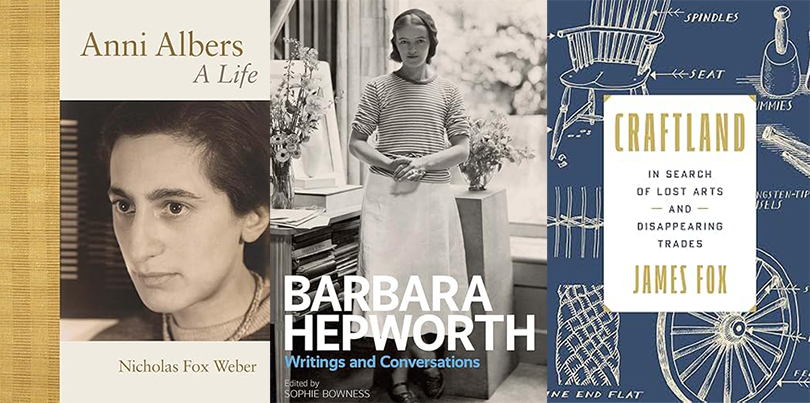
Rachel Max is looking forward to reading a new biography of Anni Albers, by Nicholas Fox Weber (Anni Albers: a life), which is coming out in April next year. “But,” she writes, “whenever I need a burst of inspiration, I dip into the Writings and Conversations, by Barbara Hepworth. I’ve always loved her work. Max also recommends Craftland by James Fox as a thoughtful and timely journey through Britain’s “endangered” crafts and heritage.
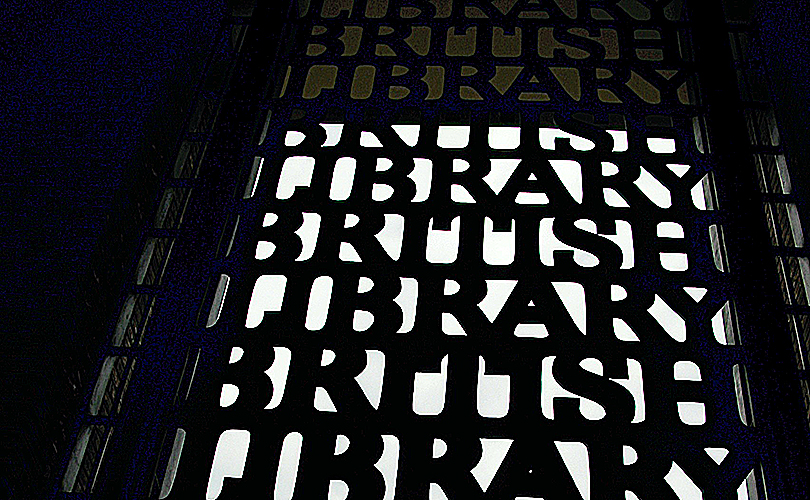
“In a digital age where handmade skill is gradually being chiseled away by mass production and AI, Fox traverses both time and land to meet some of the people keeping our need for craftsmanship alive. As a maker, I am extremely conscious of techniques – not reviving them as such, but reviewing them to make something new. Admittedly, and perhaps because I live and work in a city, I take lots for granted – how agriculture, for example, has shaped our landscape with hedgerows and stone walls. I’ve always known that Sheffield is famous for its steel production, that Birmingham has a long history of jewelery making, and that Somerset is known for willow weaving. Each area has its own unique way of doing things – stone walls and baskets vary from region to region. I’ve walked past the British Library many times without considering who designed and carved the lettering on the facade. The bells of Big Ben toll across our screens every New Year, but, like many, I take for granted the skill and expertise that went into making and tuning them.
Fox’s writing is poetic and contemplative but what comes acoss most in this book are the skills, dedication and determination of all the people he met along the way,” Max says. “Aside from the rush weaver, Felicity Irons, many names were unknown to me, but these names and their workmanship are hardly invisible, they are part of a far greater picture – our social and cultural history. So much so that once forgotten trades have become embedded in our own names and language. Fox reminds us to look around, to notice and to take note of crafts enduring legacy.”
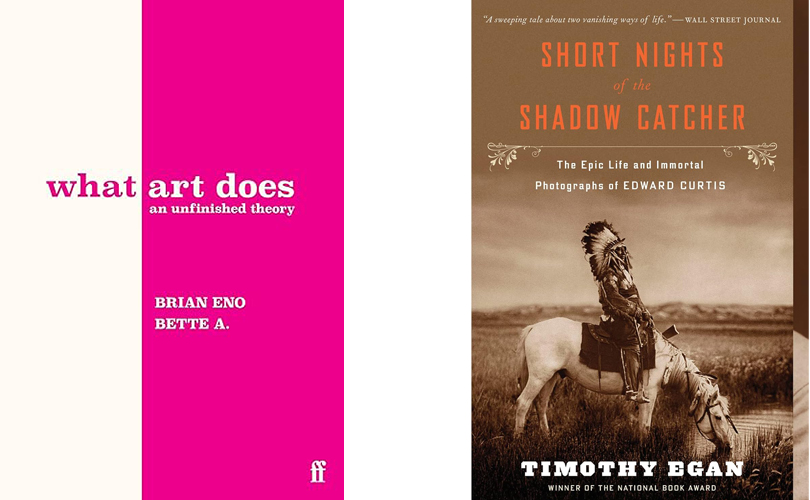
“I can recommend What Art Does: An Unfinished Theory, by Brian Eno and Bette A.,” Randy Walker writes. “It’s a small book (literally 3” x 5”) consisting of 122 refreshing pages written and illustrated in children’s book fashion — just my style. I savor the thoughts, and only read a few pages at a time so I can contemplate them for a while.” The book is billed as “an inspiring call to imagine a different future.”
“My favorite book of the year was about photographer, Edward Curtis — Short Nights of the Shadow Catcher: The Epic Life and Immortal Photographs of Edward Curtis by Timothy Egan,” writes Polly Sutton. “I recently got to view photos at the Rainier Club in Seattle where he lived for many years and paid for his room and board with pictures.”
According to the publisher’s notes, Curtis spent three decades documenting the stories and rituals of more than 80 North American tribes. It took tremendous perseverance — 10 years alone to persuade the Hopi to allow him to observe their Snake Dance ceremony. And the undertaking changed him profoundly, from detached observer to outraged advocate. Curtis would amass more than 40,000 photographs and 10,000 audio recordings, and he is credited with making the first narrative documentary film. The Ranier Club has an important collection of his works.
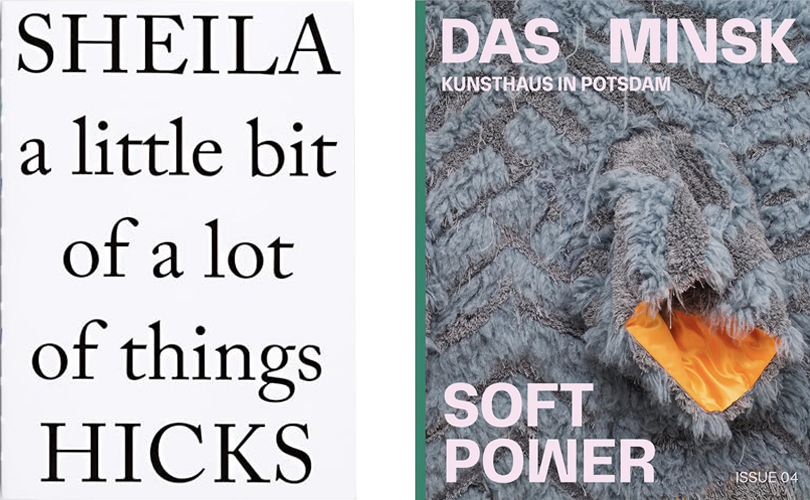
Exhibition catalogs often inspire recommendations; Europe was apparently the source for fiber exhibitions in the last 12 months, based on Heidrun Schimmel’s update. The expansive exhibition of Sheila Hicks: a little bit of a lot of things was a highlight this year In Germany, Schimmel writes. The exhibition was shown in Kunsthalle Düsseldorf from October 2024 to February 2025. “A very good catalog of the same name was published,” she writes. It chronicles 50 years of the artist’s work and features a lay-flat sewn binding and an exposed spine, A Little Bit of a Lot of Things is designed to emulate Hicks’ playful, imaginative practice.
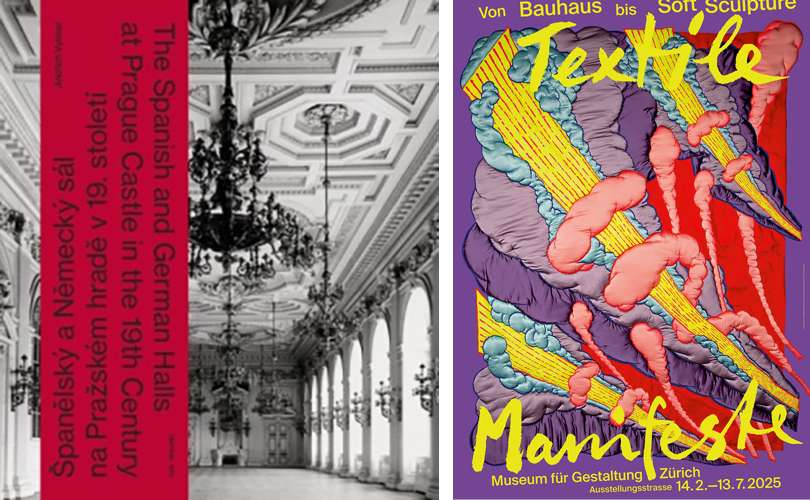
“Another good exhibition, Soft Power, was shown in the Museum Das Minsk, Potsdam, Germany, in 2024, she says. You can order the exhibition catalog (112 pages) and take on line tour here: https://dasminsk.de/en/exhibitions/4478/soft_power. A truly comprehensive exhibition, Textile Manifestos—From Bauhaus to Soft Sculpture, was displayed in Switzerland, in the Museum für Gestaltung, Zürich, she says. In addition to the fiber all-stars — Hicks, Tawney, Abakanowicz — the exhibition included intriguing artists Gunta Stölz, Elsi Giaque, Lia Cook, and Masakazu Kobayashi. In conjunction, the Museum recommends the volume, Textiles Manifestos.
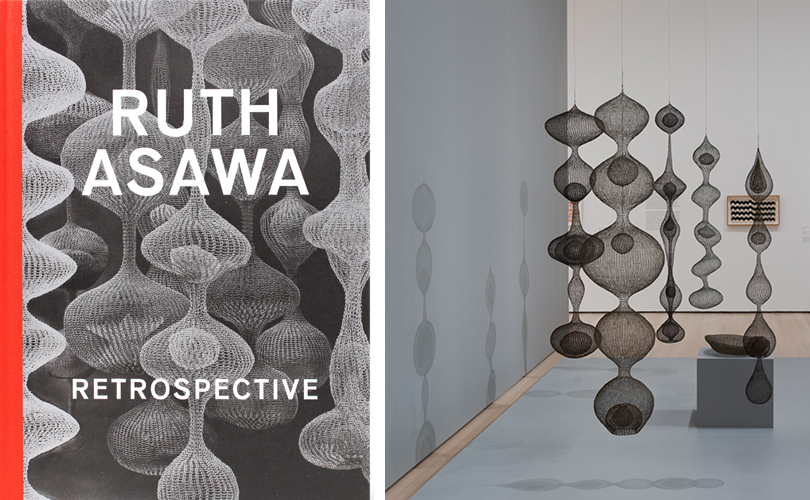
Exhibition catalogs were also the inspiration for both Karyl Sisson’s and Gyöngy Laky’s recommendation: the Ruth Asawa retrospective — first in San Francisco, now in New York. (If you are on the East Coast, you have until February 7, 2026 to see it at MoMA.) “The breadth of her work is astounding,” Karyl Sisson says. Gyöngy Laky also recommended the retrospective catalog, Ruth Asawa: Retrospective. She and her husband Tom Layton were friends with Ruth Asawa. “Thinking about Ruth Asawa reminds me that the US has overcome threats to our Democracy before,” Laky writes. “During another time challenging our democratic values, in World War II, the Asawa family members were sent to internment camps. The terrible and misguided 1942 Executive Order eventually incarcerated 120,000 people of Japanese descent. It was, however, as a child in those wretched concentration camps, that the talent and creative interests of Ruth Asawa were nurtured. In 1946, at the age of 20, Ruth went to Black Mountain College where she met her future husband, architect Albert Lanier. At Black Mountain College her drawing teacher, Ilya Bolotowsky, connected her drawing with her wire work describing it as drawing in space. She began her looped-wire sculptures there after being introduced to basketry techniques in Mexico”. The following year Asawa’s work was shown at SF MoMA for the first time — only to be the subject of an extensive retrospective nearly 75 years later.
Asawa left her mark on cultural history in other ways. She married her husband Albert in 1949 in San Francisco when interracial marriages were still illegal in many parts of the US. The partnership lasted 59 years! Asawa left a legacy within the larger Bay Area community, too. She co-founded the Alvarado Arts Workshop for elementary school children in 1968 – – now the Ruth Asawa San Francisco School of the Arts. She was deeply devoted to arts education. Laky writes that an Imogen Cunningham photo from the 1950s greeted visitors to the SFMoMA exhibition accompanied by a quote: “An artist is an ordinary person who can take ordinary things and make them special.” And, Laky says, Asawa did just that.
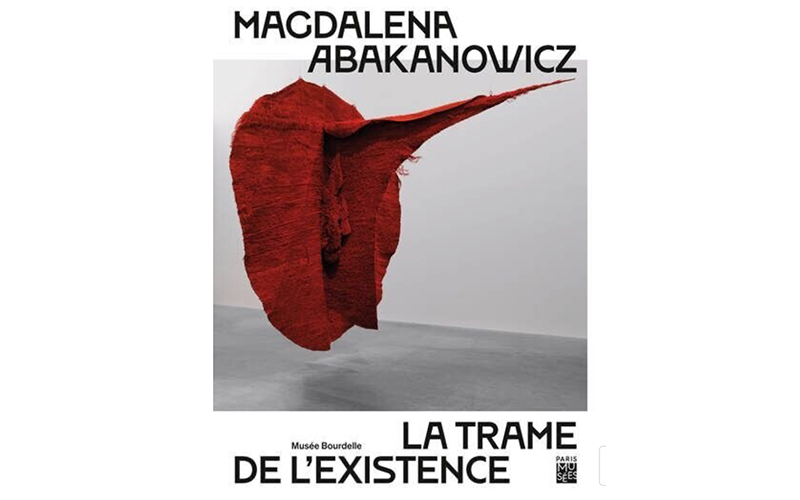
Stéphanie Jacques is looking forward to visiting Magdalena Abakanowicz: The Fabric of Life through April 12, 2026 at the Bourdelle Museum in Paris. “I love this museum and I’m excited to experience the works of Magdalena Abakanowicz. The catalog looks fascinating.” https://www.bourdelle.paris.fr/visiter/expositions/magdalena-abakanowicz-la-trame-de-lexistence In additional to exhibition attendance, Jacques has an ambitious reading list planned for next year. “Books are there to recharge us and open us up to other perspectives,” she writes. There are five books she’d like to read in early 2026:

To learn more about the path Rodin took to create his sculpture of Balzac: his approach, his doubts, his relationship to the real body, etc, Jacques is going to read Dérobades: Rodin et Balzac en robe de chambre by Marine Kisiel — only available in French. “Phyllida Barlow is an artist whose work I admire,” she writes. “I haven’t yet had the chance to see her pieces in person, and this book, In the Studio: Phyllida Barlow , text by Frances Morris, seems like an opportunity to discover more about her work and her creative process. Reading about other artists’ work is enriching and often prompts me to reflect on my own practice.” Three books on basketry in all its complexity and variety are also on Jacques’ list. She describes these as, “an inexhaustible source of inspiration and wonder; skills where the universal and the unique meet.”
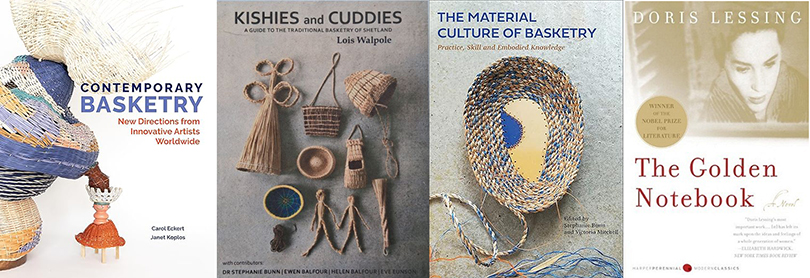
They are Contemporary Basketry: New Directions from Innovative Artists Worldwide by Carol Eckert and Janet Koplos, Kishies and Cuddies: A Guide to the Traditional Basketry of Shetland, by Lois Walpole, and The Material Culture of Basketry: Practice, Skill, and Embodied Knowledge, eds. Stephanie Bunn and Victoria Mitchell. And Jacques may return to The Golden Notebook by Doris Lessing, since she has done so regularly since first reading it over two years ago. “I have even opened it at random just to hear her voice,” she says. “It has everything: history and the upheavals of personal lives, political engagement, love, men, women, creation…”

Gizella Warburton recommended three books about our relationship to nature: Wild Service: Why Nature Needs You, eds. Nick Hayes and Jon Moses, The Language of Trees: a Rewilding of Literature and Language, by Katie Holten and Is a River Alive? by Robert MacFarlane. Wild Service calls for mass reconnection to the land and a commitment to its restoration. A national bestseller, The Language of Trees invites readers to discover an unexpected and imaginative language to better read and write the natural world around us and reclaim our relationship with it. MacFarlane has been called “the great nature writer … of this generation.” The publisher says that Is a River Alive? is a joyful, mind-expanding exploration of an ancient, urgent idea: that rivers are living beings who should be recognized as such in imagination and law. They are not textile-related, says Warburton, but each offers “a hopeful and meaningful read.” Amen to that!
Next Week:
More book recommendations— this time from browngrotta arts …
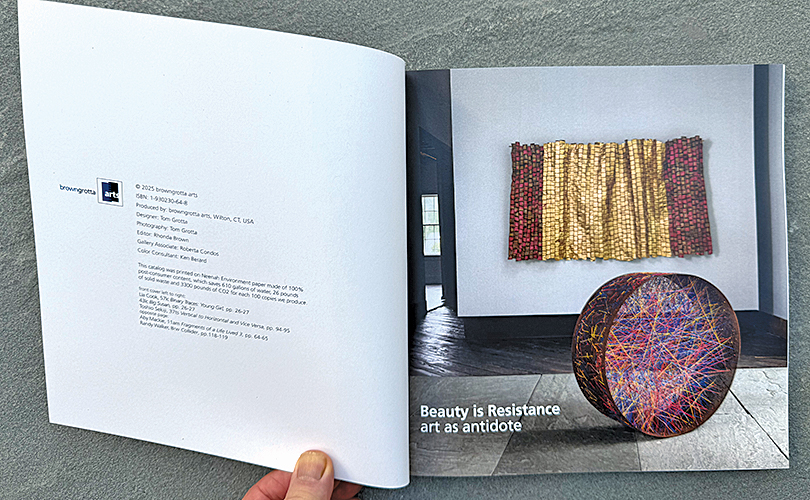
If an exhibition takes place but there is no catalog to document it, did anyone see it? Certainly not enough people have seen it, as far as browngrotta arts is concerned. That’s why we produce a catalog for nearly every exhibition we host.
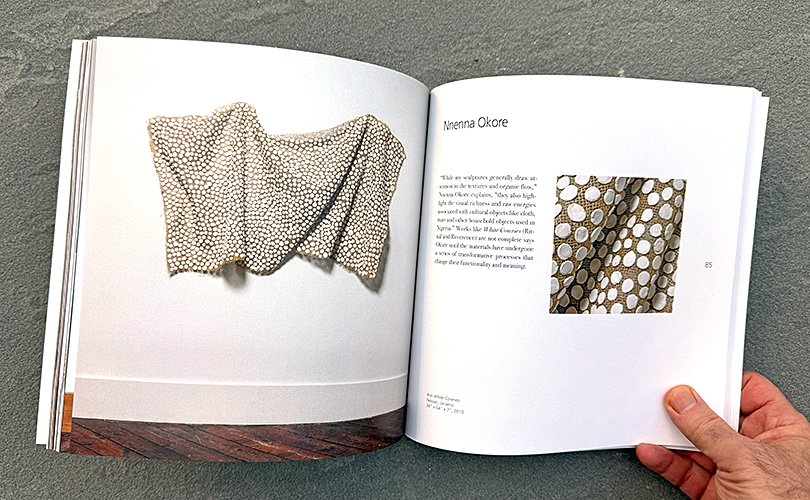
We had hundreds of people visit our Fall 2025 exhibition, Beauty is Resistance: art as antidote. But we also cowry to share the remarkable works in Beauty with even more people through our installation video and Zoom talkthrough, both on our YouTube channel, and through the print version of the show, a catalog (our 61st), available on our website.
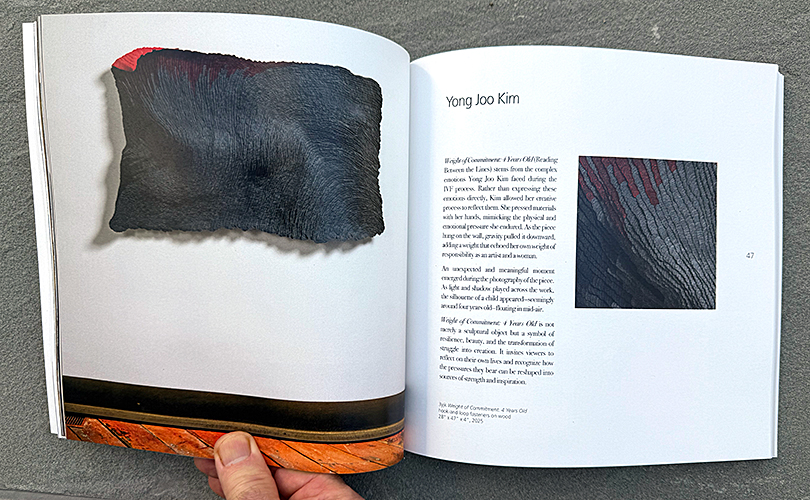
The 132-page catalog contains 125 full-color images. There are full view and detail images of each of the featured works in the exhibition. There are statements about each work in the catalog. The works in the exhibition fell loosely into four subthemes: Reading Between the Lines, Threads of Memory, Radical Ornament, and Ritual and Reverence, and the catalog identifies the category that each work falls into.
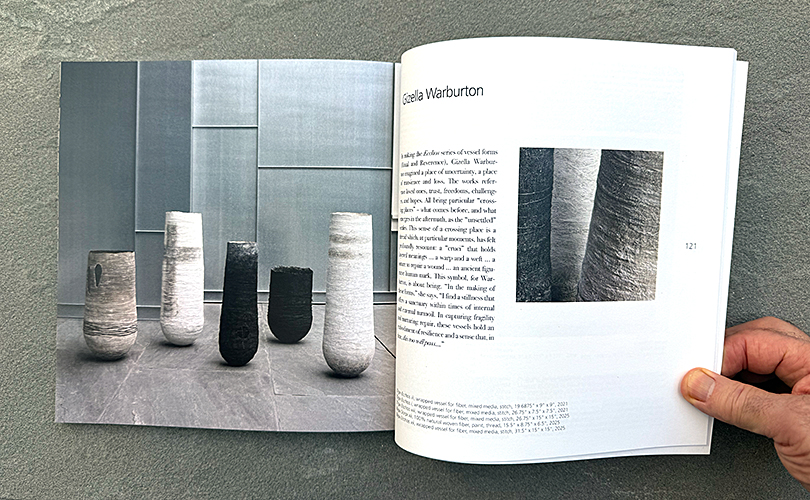
Elizabeth Essner, Windgate Associate Curator at the Museum of Art, Houston contributed an insightful essay to the catalog, “Looking at Beauty.” Essner writes about the role of nature in many of the artists’ work — for materials, lessons, and poetic inspiration. She examines varying historic conceptions of beauty, subjective, objective, and embodied, and discusses the significance of prevailing cultural aesthetics. in summarizing beauty’s pivotal place in art, Essner quotes late art critic Peter Schjeldahl (1942 – 2022) who predicted that in the future, “beauty will be what it always has been and, despite everything, is now in furtive and inarticulate ways: an irrepressible, anarchic, healing human response without which life is a mistake.”
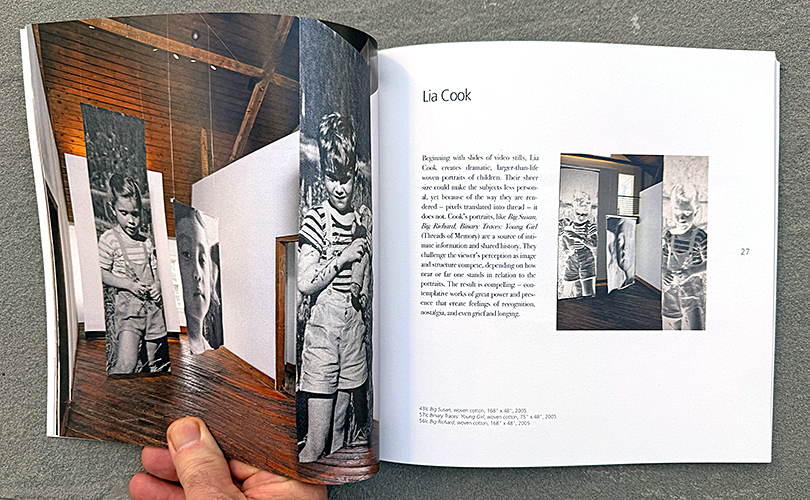
Order your copy on our website. If it’s a gift, let us know at art@browngrotta.com before December 15th and we will gift wrap your copy before we send it.

The weather’s changing here in Connecticut. Sweaters come out of storage, and sandals and sleeveless shirts are packed away. Light-colored duvets give way to warmer quilts and flannels. Pumpkins appear on porches and shelves, paving the way for twinkling lights in December.
What if we gave our art collections the same seasonal revisit?
The Japanese embrace this idea through a practice called kisetsukan, or “seasonal sense” — an aesthetic and cultural principle deeply rooted in their appreciation of nature and the home. This approach doesn’t just apply to art but extends to festivals, food, clothing, and everyday life. Kisetsukan reflects an awareness of the seasons and their emotional impact — something echoed in many cultures.

Substituting artwork throughout the year can shift one’s emotional response and renew our connection with both the art and the environment around us. A single piece viewed in spring might evoke freshness and renewal; that same piece in the depths of winter could feel nostalgic or even melancholy.
One beautiful example is Paul Furneaux’s City Trees II, City Lights II, a memory of a hidden park in Tokyo where luminous white and pale pink cherry blossoms contrasted against dark-barked pines and the brutalist concrete and glass of the surrounding buildings — a moment of heightened beauty and tension. Works like this could be rotated in and out as the days lengthen or shorten, responding to the mood of the season.

Rotating your artwork seasonally can:
You don’t need to collect four new works for each season to begin. Start small. Instead of grouping similarly sized pieces, try alternating light and dark palettes, or switching black and white for bold color.


Some pieces even offer built-in versatility:
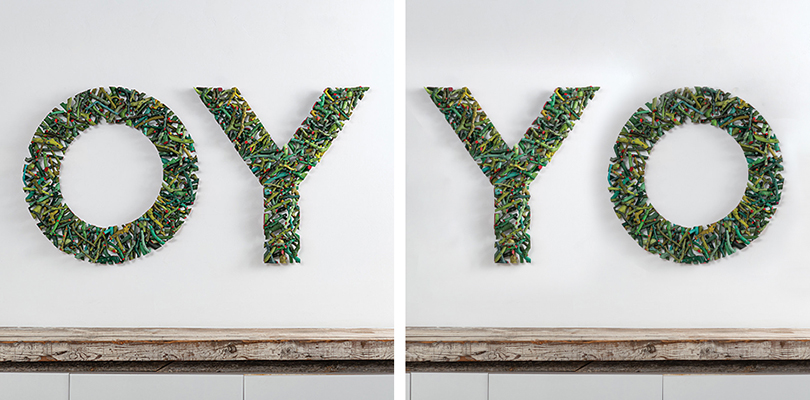
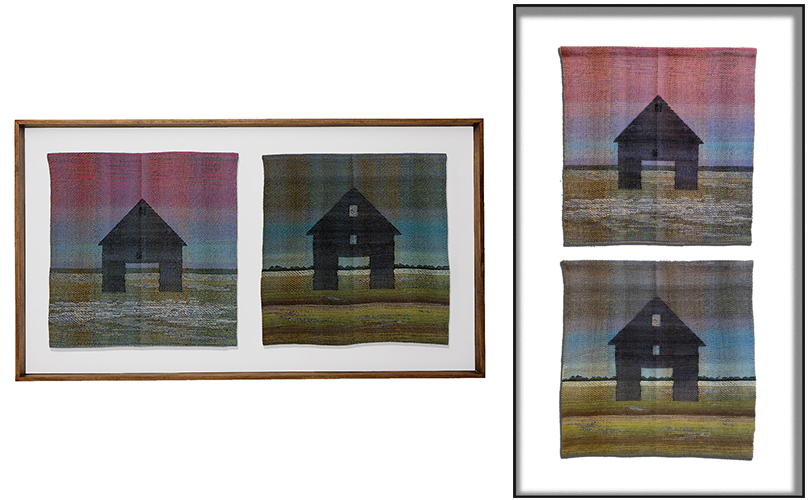
Laura Foster Nicholson’s work Shed can be hung vertically or horizontally, allowing a shift in visual weight and direction.

Sung Rim Park’s Beyond series can be installed on or off the wall, offering new perspectives and levels of engagement.
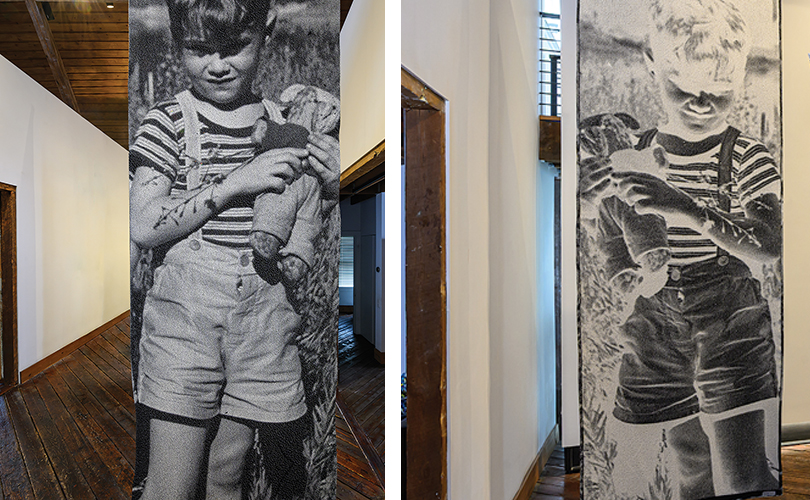
Lia Cook’s banners, like Big Richard, are impactful whether viewed from the front or reversed — another way to surprise the eye.
The more flexible the installation options, the more enjoyment you may find in your collection. Changing your art throughout the year brings new energy into a space, reawakens your senses, and reminds you of the beauty in change itself.
Last month we highlighted a series of engaging works by artists from across the globe — Latvia, America, the Netherlands, and Japan.

First up was February 2025 II, by the late Lija Rage (LV). “I create my fiber works by painting little sticks and wrapping them in copper wire, by gluing and sowing, putting layer upon layer until the work seems finished,” Rage once explained. “Textile and fiber art are modern arts. I believe that modern world culture cannot be closed. Each of us grows up from the culture we live in, through centuries, which further on is subjected to other impacts and becomes interwoven with the world culture influences.” Rage aimed to create “a mystique where each thread, metal shard, or sliver of wood discovers its unique place, contributing to an emotionally charged entirety.”
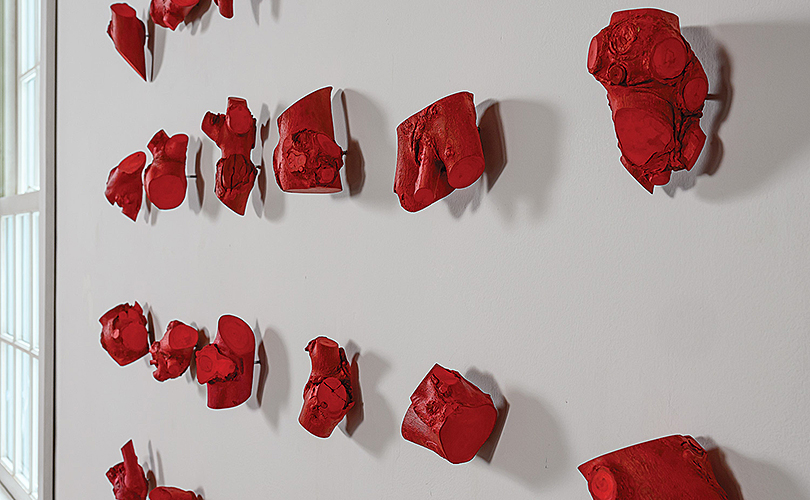
Heartwood by Gyöngy Laky (US) was next. Laky explained the origins of the work and its name: “In 2005, I paused in awe before a majestic Ash Tree in front of Customwood Furniture in San Francisco—founded in 1946 by the renowned designer Arthur Hanna. I met Arthur and a delightful friendship ensued. Whenever the Ash was pruned, his trimmer would deliver a great pile of beautiful Ash cuttings. The Tree is still there though Arthur is not. While working with Ash on a recent piece, I found myself continually sensing the nodes and branches as suggestive of human anatomy. One day, my friend and neighbor, architect Teri Behm, walked into my studio and anticipated my title, Heartwood, when she remarked, “Those pieces look like parts of a heart.”
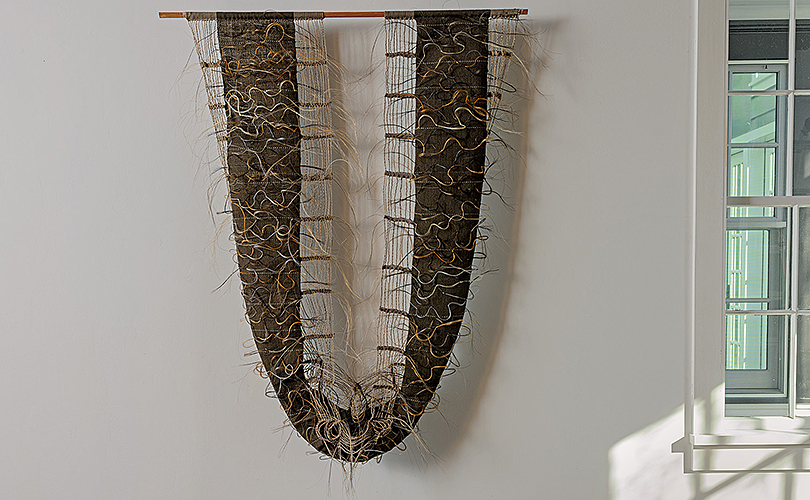
In Floating Upstream, Marianne Kemp (NL) explores how horizontal and vertical reference lines fade into the background, when coupled with random knotting of horsehair, which shifts the viewer’s focus. The interplay of overlapping textures and translucency is key to softening the otherwise bold composition. The single, straight, horizontal line, formed by the wooden dowel, brings balance to the piece. Kemp’s work is deeply influenced by her travels. Her explorations across Europe, and to places such as Mexico, Japan, Africa, and Mongolia, have further enriched her artistic vocabulary.
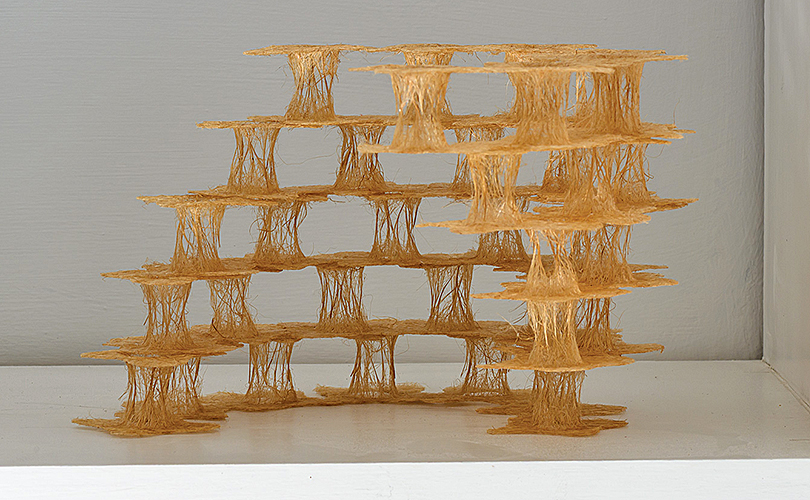
Last but not at all least, we focused on Naoko Serino’s Rooted 4. “I have been creating artworks using only jute for 28 years,” Serino (JP) says. She is grateful to be able to convey the charm of jute, which she does in three-dimensional expressions that incorporate light and air. “Life and nature are constantly changing, and every moment holds its own significance. An invisible force stimulates me, and the memories it awakens inspire my artworks. I pour my feelings into my artworks, allowing them to speak through the material.”
Enjoy the recap!
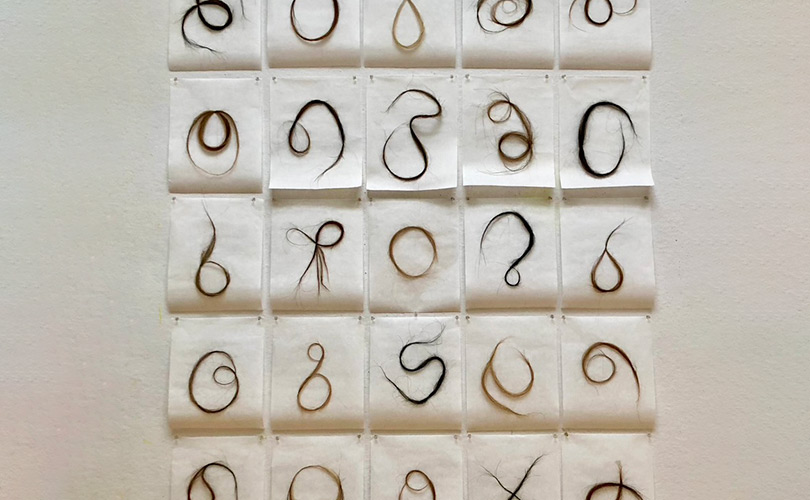
Wendy Wahl had two 2024 book recommendations to share. “Many years ago, while at Haystack Mountain School of Crafts, I discovered Mysteries of the Alphabet by Marc-Alain Ouaknin (Abbeville Press, 1999).
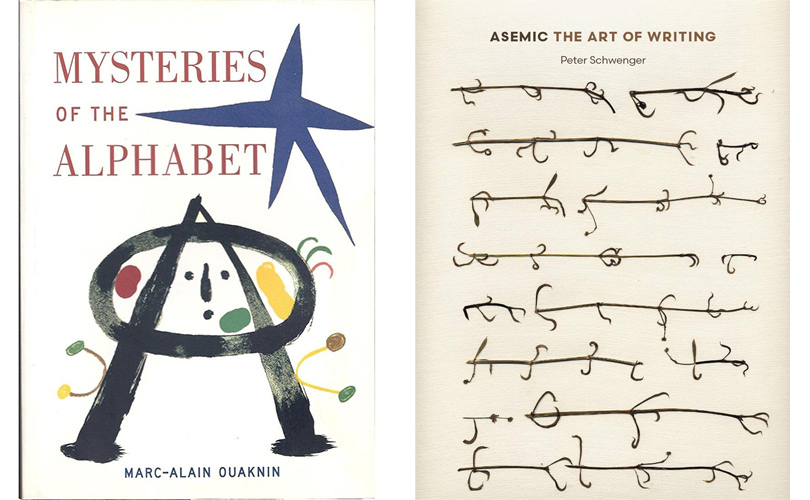
I was as interested then as I am today in the world of alphabets and their origins. This compact book is a compilation of signs, symbols, and pictograms that have been a part of the evolution of letters and their meaning over the past 3,500 years.” In 2021, Wahl made a piece called Equine Calligraphy, composed of hand-gathered and manipulated horsehair stitched to paper with strands of the same hair. She found a category for this kind of work when she came across Asemic: The Art of Writing by Peter Schwenger. The book is a survey of contemporary asemic writing and its place between art and recognizable script. [Cliff Notes version — asemic means writing without language.] The book was ecstatically reviewed: “vital and fateful;” “engaging and groundbreaking.” https://www.artnews.com/art-in-america/aia-reviews/asemic-writing-peter-schwenger-cy-twombly-roland-barthes-1202688046/.

“I was excited to realize that browngrotta arts’ artist Marian Bijlenga‘s artwork was used for the book’s cover,” Wahl wrote. browngrotta arts carries a book by Bijlenga, Written Weed, containing collages by the artist made of dried leaves, grasses, and seeds. The images are like handwriting, Chinese characters, the letters of an alphabet.
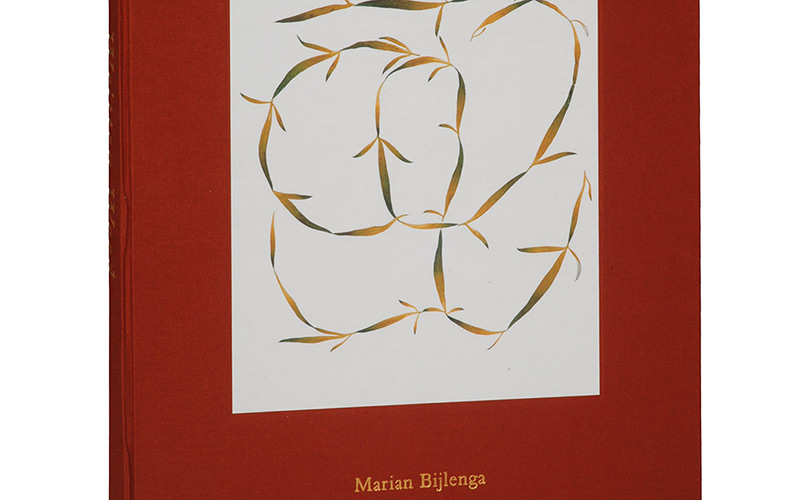
Gyöngy Laky is another artist who is interested in alphabets and messaging without recognizable forms as in the work Notes to Self. Author David Roth, says “her use of language is decidedly postmodern, seen in how she presents symbols and signs as inherently porous and unstable, subject to all the forces that influence perception and thought.”
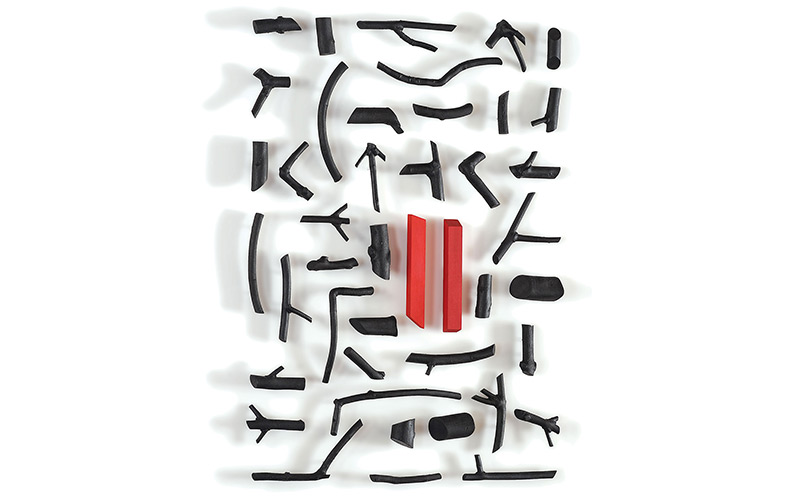
(“The Architecture of Thought,” David M. Roth, in Gyöngy Laky, Screwing with Order: assembled art, actions and creative practice, arnoldsche, 2022).
Heidrun Schimmel creates “pages” of stitches that appear to be writing, but are not.
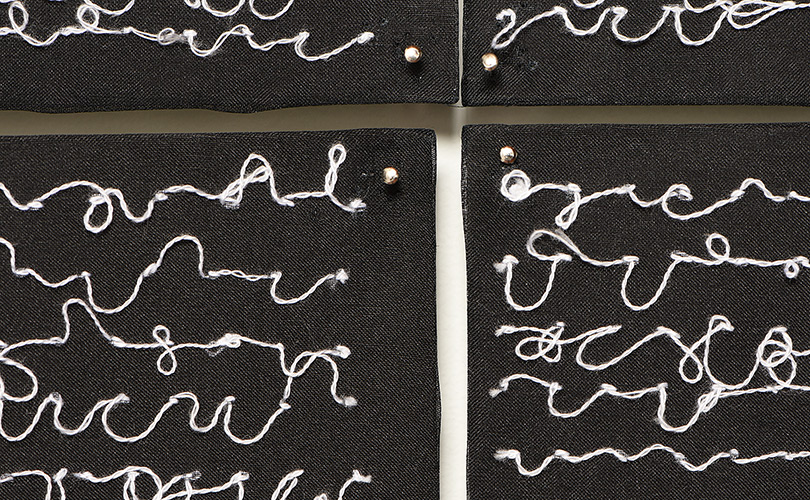
Caroline Bartlett has explored text/nontext works, too.
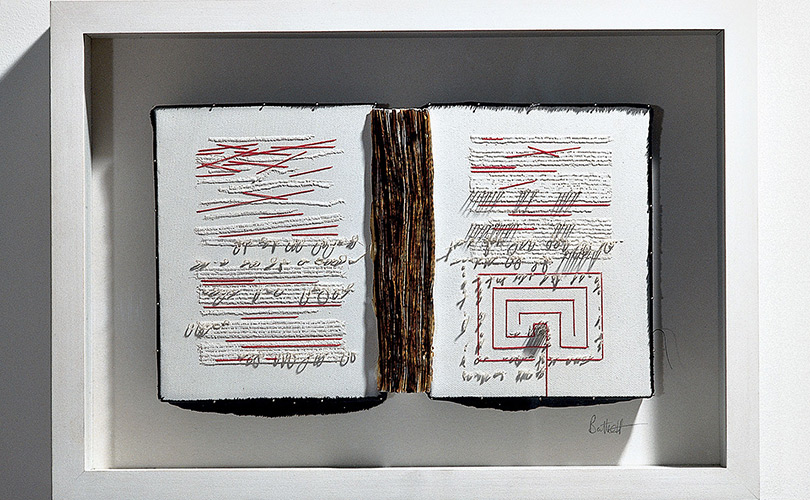
These books and artworks offer novel ways to explore how art, words and communication combine.
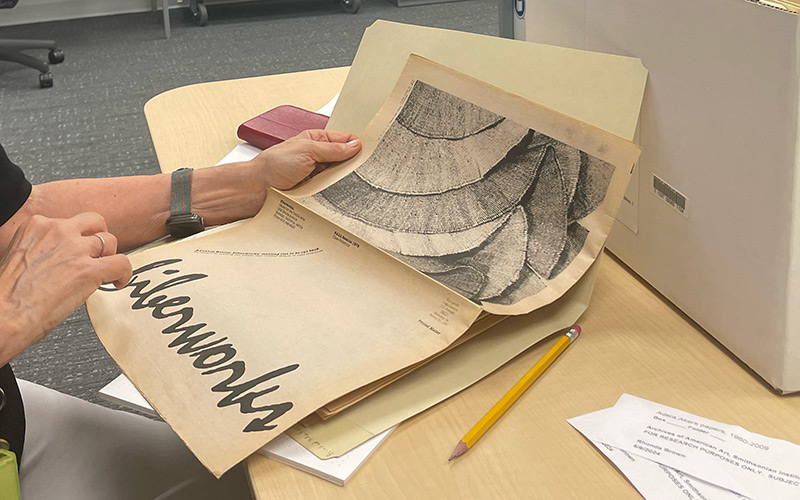
Five decades ago, Fiberworks in Berkeley, California, was a vibrant cultural hub that played a significant role in the burgeoning arts scene of the early 1970s. Situated in the heart of one of the nation’s most politically and artistically dynamic cities, Fiberworks became a space where fiber art, design, and social change intersected.
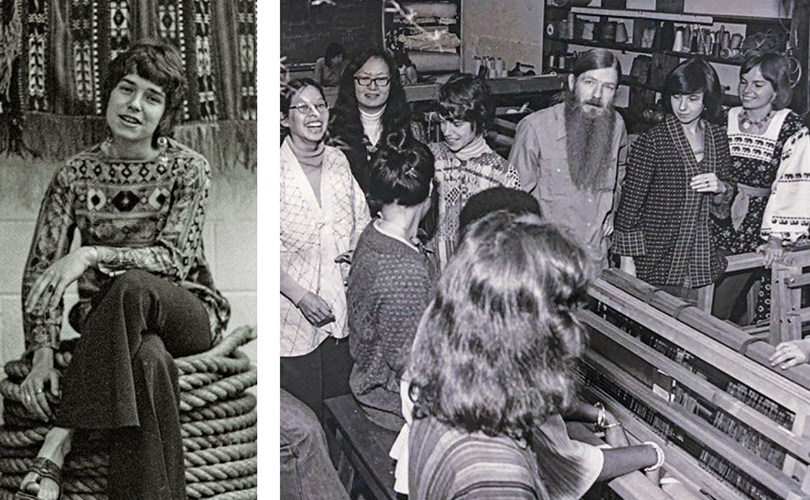
Founded in 1973 by Hungarian-born environmental sculptor, Gyöngy Laky, who served as its Director through 1977, Fiberworks was an internationally recognized art center, instrumental in redefining textile arts through the late 80s. The Fiberworks Gallery showcased textile art at a time when commercial galleries and museums gave it scant exposure. In 1975, the name was changed to Fiberworks Center for the Textile Arts, reflecting the increasing range of activities that included lectures, special events, international bazaars, and services for artists, together with a sweeping array of classes. The dynamism of creativity in Berkeley prompted internationally known textile designer Jack Lenor Larsen to refer to the Bay Area as “The Vatican” of this new movement in the arts.
Mija Riedel, who has researched Fiberworks’ history, notes that the nonprofit organization’s influence during its 15-year existence far exceeded its modest means. By the early 70s, Riedel explains, the San Francisco Bay Area was a rich and established focal point for textile art. Trude Guermonprez, a transplant from Black Mountain College, headed the Crafts department at California College of the Arts in Oakland. Kay Sekimachi, a student of Guermonprez, had gained recognition for her series of complex three-dimensional monofilament hangings. Katherine Westphal was a professor at UC in Davis. Ruth Asawa’s iconic wire sculptures – made with a technique learned from basket weavers in Toluca, Mexico – were the subject of a 1973 retrospective at the San Francisco Museum of Modern Art. Ed Rossbach’s teaching at the University of California, Berkeley, had influenced Laky and other Fiberworks’ artists. His experimental approach inspired a new generation of artists to explore new ways of working with what, up to that time, had been utilitarian materials. Artists explored unconventional uses of fibers like synthetic materials, found objects, and even recycled textiles, challenging the boundaries between art and craft. As Riedel observes, Fiberworks drew on this community of artists and their energy, ingenuity and inventiveness. (Mija Riedel, unpublished research, cited in Gyöngy Laky: Screwing With Order, assembled art, actions and creative practice, 2022, pp. 32.) In our research at the Archives of American Art in DC in May, we were stuck by the long list of artists who taught at Fiberworks including Kay Sekimachi, Adela Akers, Daniel Graffin, and Katherine Westphal. The Center became accredited and eventually offered degree programs.

Fiberworks’ reputation extended well beyond California and the US, notes Riedel. Some of the world’s most-celebrated fiber artists, including Sheila Hicks, Ritzi and Peter Jacobi, and Magdelena Abakanowicz, participated in Fiberworks’ programs. The Center’s international impact was affirmed when Fiberworks organized and hosted the Symposium on Contemporary Textile Art in 1978 and 500 participants from eight countries participated. The Symposium’s broad attendance, which included Helena Hernmarck, Walter Nottingham, and Nance O’Banion, “[bore] witness to the widespread interest in the new textile art.” (Giselle Eberhard Cotton and Magali Junet, From Tapestry to Fiber Art: Lausanne Biennials 1962-95, (Skira, Milan, Italy, 2017), p. 78.) Recognition and visibility for Fiberworks’ faculty, lecturers, exhibitors, and students also grew. In 1975, both Laky and Lia Cook would be selected to produce large, commissioned works for the federal Art-in-Architecture Program. (Riedel, pp. 33-34.)
“Fiberworks had a major impact on me, my art, and my life, and I think maybe on the teacher I am today,” Laky told interviewer Harriet Nathan in 1998(Gyöngy Laky: Fiber Art: Visual Thinking and the Intelligent Hand, Regional Oral History Office, The Bancroft Library, University of California, Berkeley, California, 2003. An oral history conducted by Harriet Nathan, University of California. Interviews conducted in 1998–1999 (Bancroft Library Oral History), pp. 116-117). “There was a lot of exchange and learning. One of the things that I got from that experience, that early experience, was to give openly, not to secretly guard my ideas. People did not secretly guard their ideas, they didn t think, ‘Oh, this is my special way of working, I m not going to show it to anyone.’ The moment somebody came up with something that was working and exciting, that artist could hardly wait to do a class or demonstration to show everyone: ‘Here I just invented something, come look, let me teach you, let me show you.’ Wonderful spirit in that regard …. The moment people figured out some strange way of braiding or a different way of presenting a performance, whatever it was, it was given and out. The feeling was that there were so many ideas following behind that you didn’t have to guard your precious inventions or discoveries, that good ideas, creative ideas were limitless and there would be many more to come.”
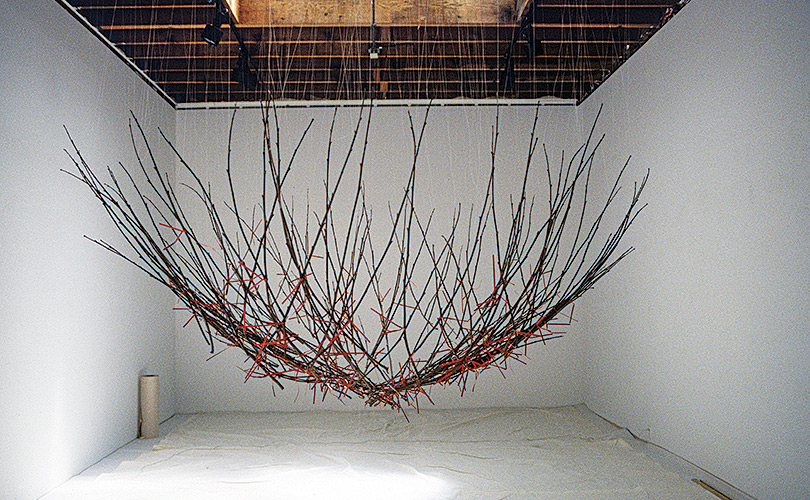
The experimentation Rossbach encouraged in his classes at UC Berkeley evolved at the Center, into a wide-ranging exploration of site-specific, installation, performative, and non-traditional approaches, according to Riedel. Chere Lai Mah, a key member of Fiberworks’ nucleus, characterized that spirit of inventiveness as it had influenced her artwork in a statement for the exhibition, FIBERWORKS 1976, as “spontaneity, flexibility, spaces, change, impermanence, simplicity, actions, shadows, lines, throwaways, and the relationship of ideas and forms to their beginnings, becomings and endings.”(FIBERWORKS 1976 exhibition at the Transamerica Pyramid, San Francisco, California, coordinated by Louise Allrich.) In reviewing the FIBERWORKS 1976 exhibition, critic Alan Meisel noted, “The explosive newness of the works… sparkles….” (Alan Meisel, “Bay Area Fiber Art,” Artweek, October 9, 1976.)
In 2023, to celebrate Fiberworks’ illustrious 50-year anniversary, a group of former students and staff, including Julie Anixter, Gyongy Laky, Lia Cook, Donna Larsen, Janet Boguch, Chere Lai Mah, Susan Wick, Pat Hickman, and Debra Rapoport intiated a series of commemorative activities. There is a Wikipedia page, a Berkeley Historical site, records in the Archives of American Art. There have also been virtual presentations discussing Fiberworks and its influence, and the influence of Katherine Westphal and Ed Rossbach. The presentation about Ed Rossbach can be viewed online. It includes Tom Grotta’s images and commentary about Rossbach’s long association with browngrotta arts. More of the presentations will be made available online at a later date.
Enjoy!
Fiber is having a moment — exhibitions of art textiles and fiber art are installed all over the world. Having promoted this medium for more than 30 years, browngrotta arts couldn’t be more pleased. We represent the work of an extraordinary group of artists — from fiber art’s origins in the 50s and 60s, to those whose careers started many years later. Our Spring Art in the Barn exhibition, Discourse: art across generations and continents, is designed to celebrate this multiplicity of makers and methods. Open at browngrotta arts in Wilton, Connecticut, from Saturday, May 4th through Sunday, May 12, 2024, Discourse will assemble a large and eclectic group of artworks that celebrate artists from different countries, who work with varied materials, and represent distinct artistic approaches. More than 50 artists from 18 countries will be featured. Included will be current works from 60 years ago, current mixed media works and sculpture, and pieces created in the decades between — enabling an intriguing look at intergenerational differences, material breakthroughs, and historical significance in fiber art.
The comparisons and contrasts on view in Discourse involve differing approaches to structure, materials, abstraction, messaging, techniques and more. Viewers are encouraged to develop and refine their own perspectives of contemporary fiber’s evolution and energy.
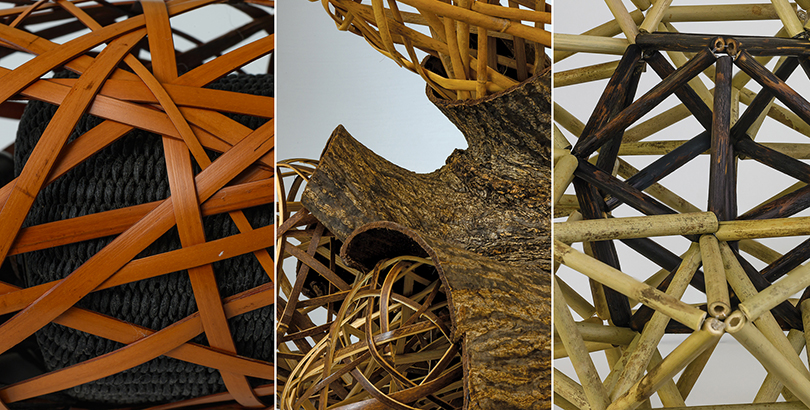
Exploring Bamboo, Baskets by Nancy Moore Bess, Hisako Sekimachi, Noriko Tanikawa. photos by Tom Grotta
The artists in Discourse each possess “material intelligence,” what author and curator Glenn Adamson describes as “a deep understanding of the material world around us, an ability to read that material environment, and the know-how required to give it new form.” They take a disparate approach to materials such as bamboo, rendered differently by Hisako Sekijima (JP), Nancy Moore Bess (US), and Noriko Tanikawa (JP)

Three artists, Marianne Kemp (NL), Adela Akers (US) and Marian Bijlenga (NL) work with horsehair, each with differing results.
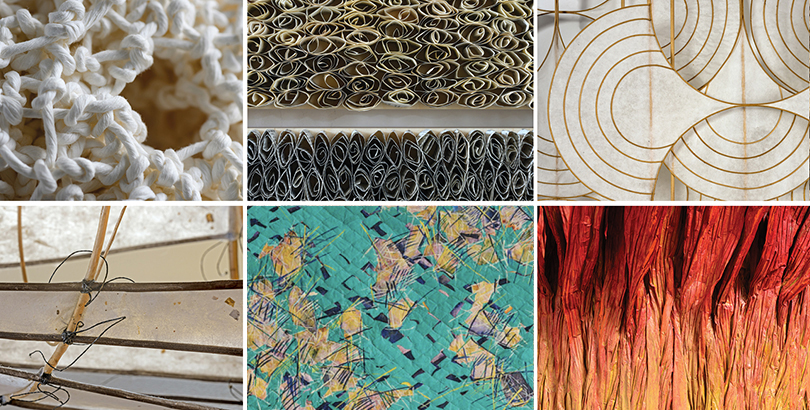
Paper is perhaps the most mutable material in the exhibition. Paper cord, book pages, and rice paper used by Shoko Fukuda (JP), Mary Merkel-Hess (US), Naomi Kobayashi (JP), Pat Campbell (US), Eva Vargö (SE), Neda Al-Hilali (US), Jane Balsgaard (DE), and Wendy Wahl (US) are among the material variations found in Discourse.

Engaging structures are also featured in Discourse. Intricate sculptures of willow twigs by John McQueen, ethereal objects of jute by Naoko Serino, sinuous crocheted works by Norma Minkowitz (US), and Norie Hatekayama’s inexplicable forms of plaited paper tape illustrate the multiple ways in which artists continue to innovate in this medium.
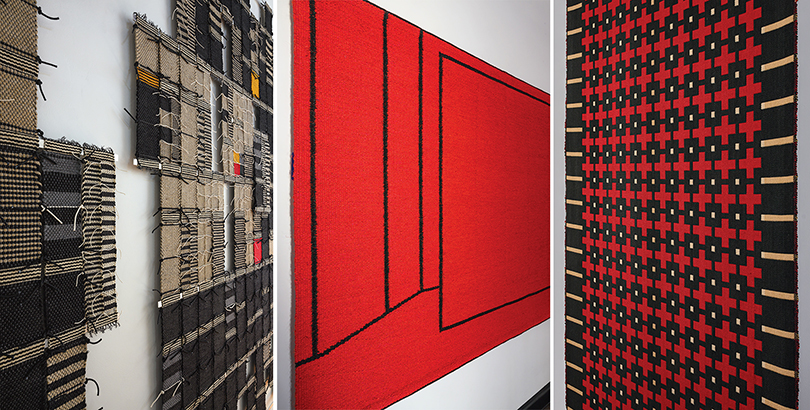
Much has been made this year about the contributions of weaving and related techniques to abstraction, modernism’s preeminent art form. Witness Woven Histories: Textiles and Modern Abstraction at the National Gallery in Washington, D.C. and Weaving Abstraction in Ancient and Modern Art at the Metropolitan Museum of Art, New York, New York, which aims to offer new insights into the emergence of abstract imagery. Specifically, the Met’s exhibition sets out to illustrate how the constructive nature of weavings, arising from the grid formed by the vertical and horizontal elements of the loom, prompted the formal investigation of geometric designs. There are several examples in Discourse, works by Warren Seelig from the 70s and 80s, and works from Blair Tate (US) and Gudrun Pagter (DK) created 50 years later.
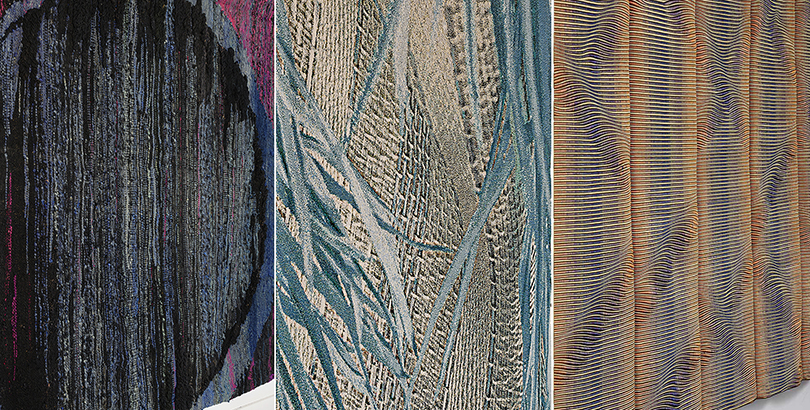
The evolution of contemporary fiber art can be seen in works from Eastern Europe and those from Western Europe and the US. One of the oldest works in the exhibition is a heavily textured wool-and-linen weaving, Słońce Szafirowe, (Sapphire Sun), by Polish weaver Zofia Butrymowicz from 1968 which was featured in Beyond Weaving: the art fabric, by Jack Lenor Larsen and Mildred Constantine which provides an interesting contrast to Jacquard tapestries of wool and cotton by Americans Lia Cook and Michael Radyk.
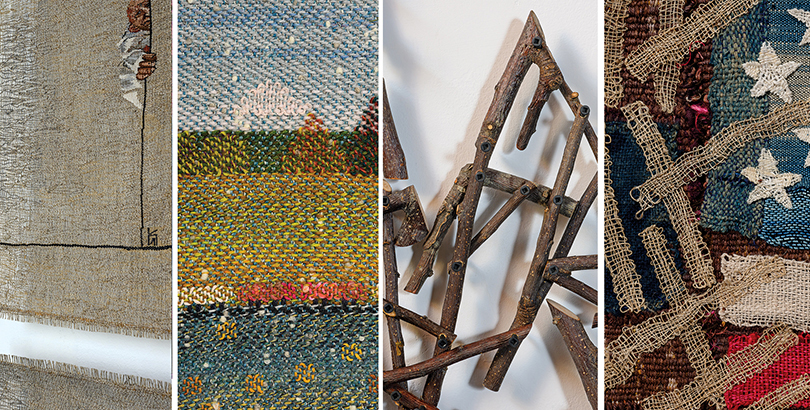
Some of the artists in Discourse, including Laura Foster Nicholson (US) Gyöngy Laky (US), James Bassler (US), and Irina Kolesnikova (RU/DE), use the medium of fiber art to make explicit statements about the modern world — about personal anxieties, human interaction and our impact on the environment. Gyöngy Laky’s (US) work, Anticipation, which spells out the word “Who?“ in applewood branches, presents a question. “Given the challenges, concerns, conflicts and other dangers we face today,” Laky says, “this question, underlies the search for a way forward to a better day.” Laura Foster Nicholson’s (US) woven landscapes, idyllic at first glance reveal a concern with the natural world. “In recent years,” the artist says, “my work has moved toward recording the various ways humankind has interfered in the environment.” Through Spectator, Irina Kolesnikova (RU/DE) shares the anxiety of daily life. She presents a man, her alter ego, in a variety of discomfiting scenarios. In This Old House, Jim Bassler references the book Caste, which describes America as an old house, with the caste system wrought by slavery as central to its operation as are studs and joints. Bassler’s flag is patterned with wax resist and a multitude of woven elements “that could represent the textile talents of the Africans who arrived in Virginia in 1619 and who were forced into slavery thus giving up their identity and culture.”
In sum, Discourse offers no end of ideas and innovations. We invite you to draw comparisons and gain new perspectives of your own. See you in May!
Exhibition Details:
Discourse: art across generations and continents
May 4 – May 12, 2024
browngrotta arts
276 Ridgefield Road, Wilton, CT 06897
Gallery Dates/Hours:
Saturday, May 4th: 11am to 6pm [Opening & Artist Reception]
Sunday, May 5th: 11am to 6pm (40 visitors/ hour)
Monday, May 6th through Saturday, May 11th: 10am to 5pm (40 visitors/ hour)
Sunday, May 12th: 11am to 6pm [Final Day] (40 visitors/ hour)
Schedule your visit at POSH.
Safety protocols:
POSH reservations strongly encouraged • No narrow heels please
Catalog:
A full-color catalog, browngrotta arts’ 59th, Discourse: art across generations and continents, with an essay by Erika Diamond, Artist | Curator | Associate Director of CVA Galleries | Chautauqua Institution, will be published by the browngrotta arts in May 2024 in conjunction with the exhibition.
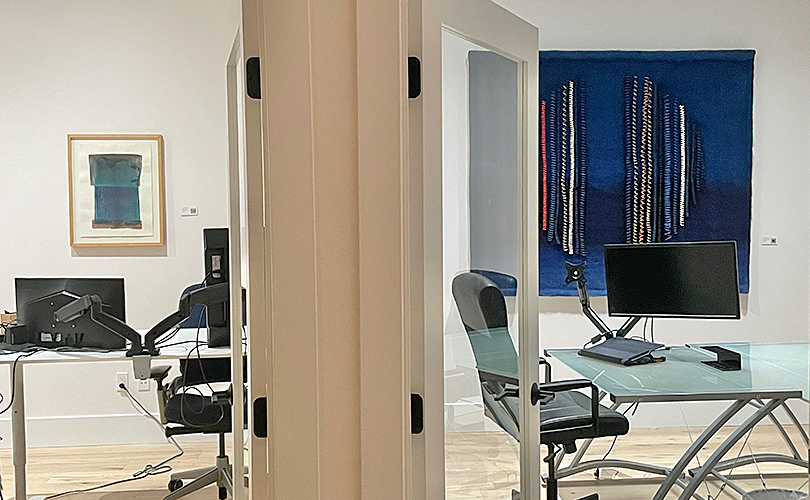
If Wikipedia is to be believed, Pop-Up art exhibitions began in 2007 in New York City. They now occur all over they world. Pop-ups are generally temporary events, less formal than a gallery or a museum, often using unusual spaces. Their popularity has boomed since the oughts, including Banksy’s Dismaland which collected work by 58 artists in a rundown seaside town in the UK in 2015, Yasoi Kusama’s room that exploded with flowers in Melbourne, Australia in 2018, the Museum of Ice Cream (not technically a museum) currently in several locations including Miami, Boston and Singapore, and The Color Factory in New York City, Houston, and Chicago. Pop-Ups are often immersive, interactive, and collaborative like Meow Wolf in Santa Fe, which began in 2008 as a small collective of artists sharing an interest in publicly displaying their works and developing their skills. Meow Wolf now aims to “redefine the paradigm of art and storytelling to make a positive difference in the world.”

Fast forward to 2024: browngrotta arts has its own Pop-Up of sorts at JUICE Creative Group in Norwalk, CT. JUICE handles our social media, website development, event planning and other miscellany. It has loads of clients coming into its business and rental studio space each week. Now, select Juice visitors are able to view (and acquire) JUICE Art, a specially assembled group of works from artists who work with browngrotta arts.
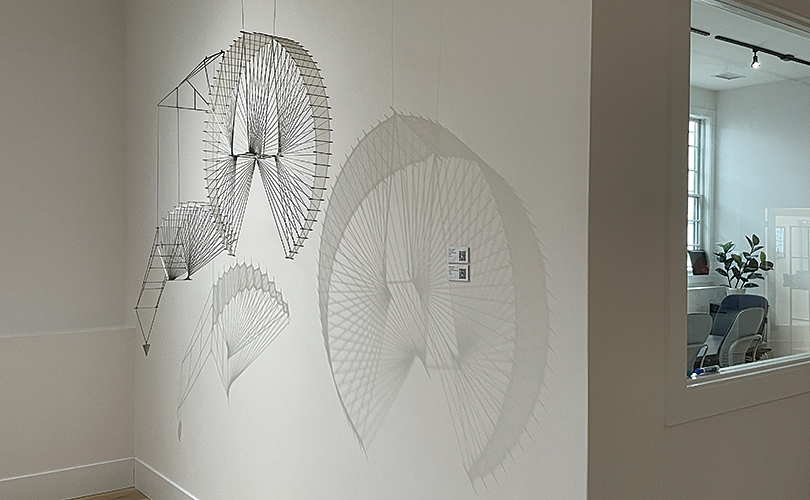
In curating the collection, we were mindful of the JUICE ethos. It’s a brand and digital agency based in the US, with team members all over the world. JUICE takes pride in the team of brand experts, designers, marketers and tech geeks it’s built, and the vibrant creative culture it has fostered. To reflect that creativity and energy, we suggested works like Grethe Sorensen’s Out of Focus that references pixels from printing, Warren Seelig’s mechanical sculptures, Small Double-Ended and White Wheel, Gyöngy Laky’s playful Beach Sketch, made of electrical tape wrapped branches and Electricity/Energy by Mariette Rousseau-Vermette, a tapestry that incorporates wire.
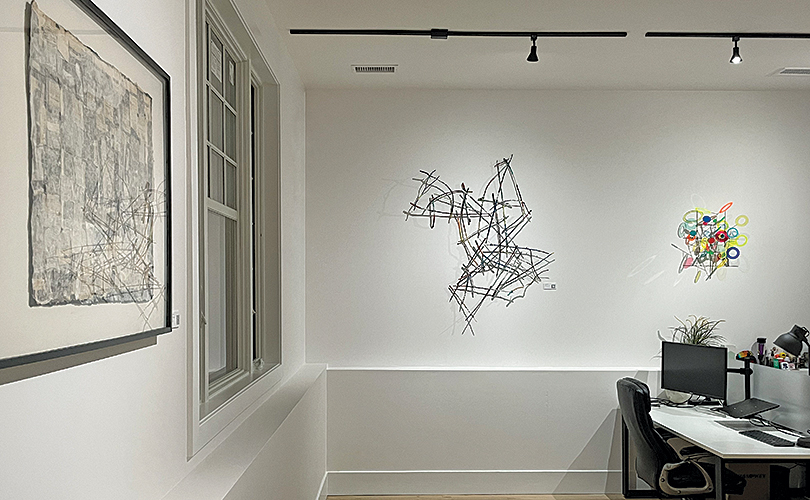
Printed pages are another theme; the agency produces a lot of textual content. There are collages made of books and newspapers by Toshio Sekiji; works by Wendy Wahl of encyclopedia pages, and an interesting work by Mercedes Vicente that mixes string and spiral notebook pages and “hints” at writing. Photography, too, was a theme. In a room clients use, we placed a textile triptych made of photo images of Japanese tile roofs that are fragmented, silk screened, and metal-leafed made by Glen Kaufman along with works of paper by Gizella Warburton. On a floor of offices, there are photographs of fiber sculptures by Federica Luzzi, White Shell Tongue 1 and 2 beside a graphic tapestry by Gudrun Pagter.

In deciding what to display, we also collaborated with the JUICE team, including some works by artists they chose. John McQueen is a favorite of several team members. We included Intimate Domain, which includes a tree made of repurposed plastic surrounded by a frame made of small branches and cable ties and also Treed, a depiction of a tree where the drawing creeps off the page an onto the frame. Another popular artist was Canadian painter and ceramist Claude Vermette. There are two of his large canvases, one triptych and one small water color hung throughout the space. Also on the team’s list, works by Keiji Nio, Jo Barker, Dorothy Gill Barnes, Jiro Yonezawa, Chiyoko Tanaka and Jennifer Falck Linssen.

For us, a Pop-Up is a Good Op. The JUICE space looks better, clients and staff appreciate the work, and we get more eyeballs for some great works of art!
We’ve spent the first weeks of 2024 summing up 2023 and looking at this year’s trends in art and design. Now we’ve got a more concrete prediction — our Spring Art in the Barn exhibition will run from Saturday, May 4 through Sunday, May 12, 2024. Discourse: art across generations and continents will explore the diversity in art textiles and fiber sculpture.
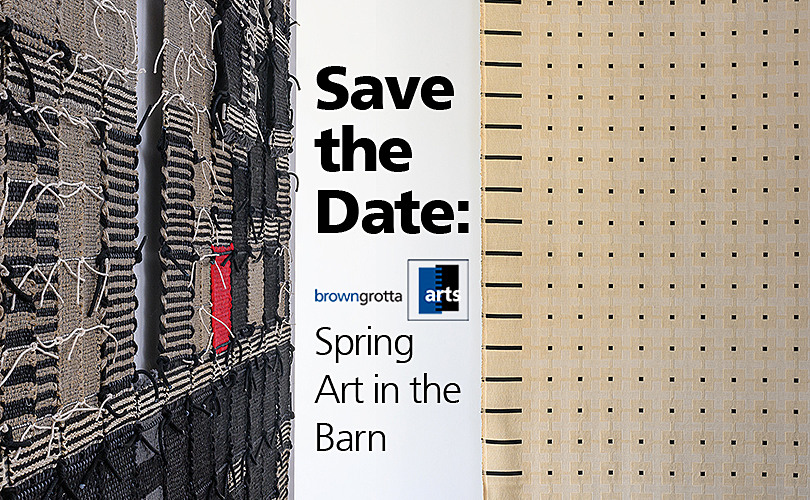
In Discourse, browngrotta arts will assemble a large and eclectic group of artworks that celebrate artists from different countries, who work with varied materials, and represent distinct artistic approaches. More than 50 artists from 20 countries will be featured.Included will be works from the art form’s origins 60 years ago, current mixed media works and sculpture, and pieces created in the decades between — enabling an intriguing look at intergenerational differences, material breakthroughs, and historical significance in fiber art.

structural explorations
Despite their distinctiveness, the artists in Discourse share a common trait. Each possesses “material intelligence,” what author Glenn Adamson describes as “a deep understanding of the material world around us, an ability to read that material environment, and the know-how required to give it new form.” The works in Discourse reflect this mastery. Artists like John McQueen and Norma Minkowitz of the US and Norie Hatekayama and Naoko Serino of Japan engineer imaginative structures of unexpected materials — plaited paper tape, molded jute, crocheted linen, and pieced twigs and branches.
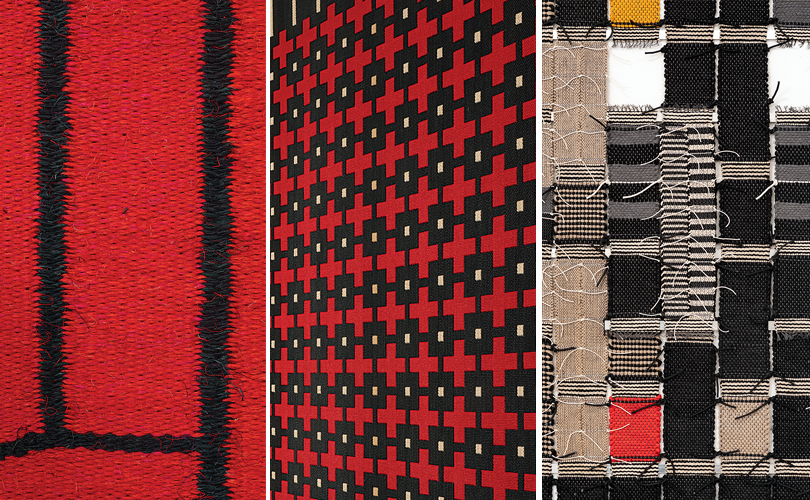
fiber art … an evolution
Discourse also offers viewers a chance to make intergenerational and cross-continental comparisons. Included will be starkly graphic weavings by Warren Seelig (US) made in the 70s and 80s, and ones by Gudrun Pagter (DK), and Blair Tate (US) made 40+ years later. We have often observed a different sensibility among artists from Eastern Europe and those in Western Europe, Asia, and the US. Artists in Eastern Europe have a history, which began after World War II, of using items at hand to create works – sisal, rope, hemp, goat hair. A fierce energy is seen in these works; they are rugged and raw. By contrast, for artists who worked elsewhere in more traditional tapestry materials like wool, silk, linen – quietly refined works were often the result. Discourse will spotlight such regional contrasts.

material matters
Viewers to Discourse will also see a wide range of to material and technique approaches. Several artists make vastly different uses of paper — scrolling of encyclopedia pages by Wendy Wahl (US), knotted paper objects by Shoko Fukuda (JP), and sculptural works of rice paper by Pat Campbell (US). Three other artists, Adela Akers (US), Marianne Kemp (NL), and Marian Bijlenga (NL), use horsehair in vastly different ways.
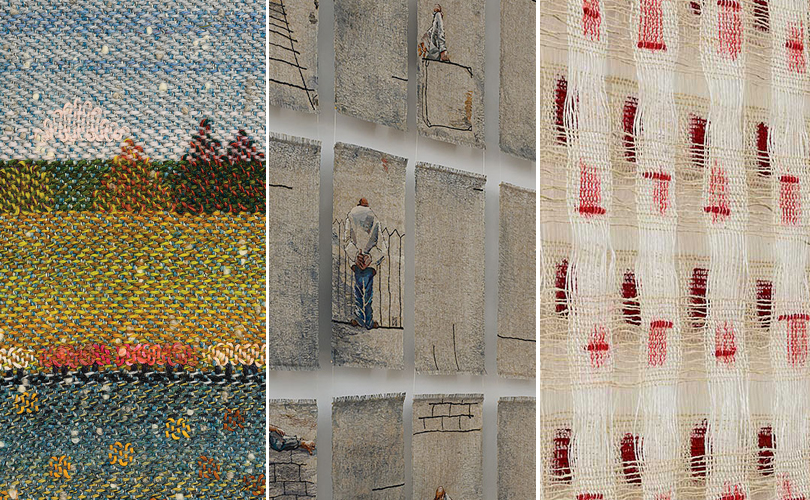
the medium is the message
Some of the artists in Discourse, including Laura Foster Nicholson (US) Gyöngy Laky (US), and Irina Kolesnikova (RU/DE), use the medium of fiber art to make explicit statements about the modern world — about personal anxiety, communication, and humans’ impact on the environment. “I like to tease the brain – to promote or even provoke or cajole, a visual dialogue with the viewer,” says Gyöngy Laky (US). Her work, Anticipation, which spells out the word “Who?“ in applewood branches, presents a question. “Given the challenges, concerns, conflicts and other dangers we face today,” Laky says, “this question, underlies the search for a way forward to a better day.” Anneke Klein (NL) is interested in communication: In Dialogue — Her work is made up of two layers that hang, one in front of the other. When you change your position in front of Dialogue, the interaction between the two layers changes, as it does between two speakers.

experiments in technique
Contemporary fiber art is by definition experimental. It arose when a group of artists used tapestry techniques to create abstract sculptures that hung off the wall. A work of parallel optical lines from studies Lia Cook (US) did for her master’s thesis in the 1970s will be included along with works reflecting Neha Puri Dhir’s (IN) currrent experiments dying silk and baskets by Esmé Hofman (NL) of black willow and elm that also incorporate color.
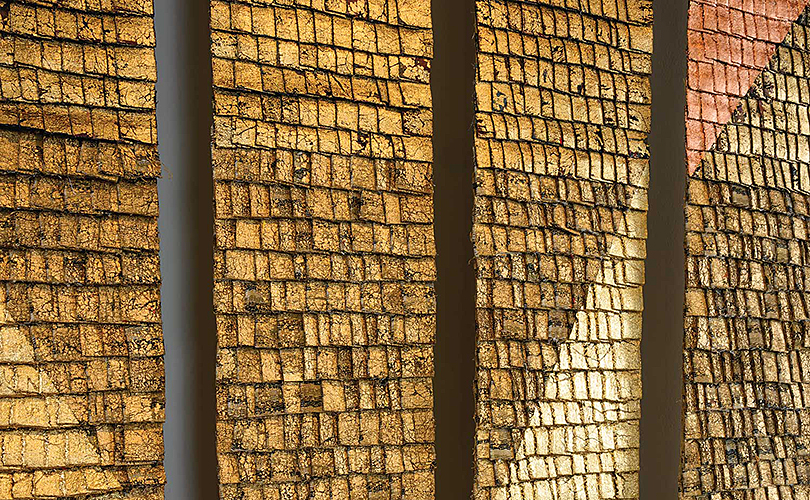
fiber art has emotional appeal
Fiber art — art textiles, tapestries, and three-dimensional sculpture — engages us on a deeply personal level. Our first memories are of cloth, fuzzy blankets, soft towels and they remain strong ones. Scientists have shown that different parts of the brain light up when we look at a woven image and a photographic image of the same item. Aby Mackie (SP) sources and recycles used fabrics from flea markets, fabrics laden with memory. She is captivated by these silent witnesses to a life lived; a worn bed sheet, a stained tablecloth, a moth-eaten gown. Such artifacts bear the marks and physicality of human nature, possessing a poetic power. She gilds this repurposed material in works like We Can All Be Saved, leaving viewers to consider what creates value.
We invite you to draw comparisons and gain new perspectives of your own. See you in May!
Exhibition Details:
Discourse: art across generations and continents
May 4 – May 12, 2024
browngrotta arts
276 Ridgefield Road, Wilton, CT 06897
Gallery Dates/Hours:
Saturday, May 4th: 11am to 6pm [Opening & Artist Reception]
Sunday, May 5th: 11am to 6pm (40 visitors/ hour)
Monday, May 6th through Saturday, May 11th: 10am to 5pm (40 visitors/ hour)
Sunday, May 12th: 11am to 6pm [Final Day] (40 visitors/ hour)
Schedule your visit at POSH
Safety protocols:
POSH reservations strongly encouraged • No narrow heels please
Catalog:
A full-color catalog, browngrotta arts’ 59th, Discourse: art across generations and continents, will be published by the gallery in conjunction with the exhibition.
| M | T | W | T | F | S | S |
|---|---|---|---|---|---|---|
| 1 | 2 | 3 | 4 | |||
| 5 | 6 | 7 | 8 | 9 | 10 | 11 |
| 12 | 13 | 14 | 15 | 16 | 17 | 18 |
| 19 | 20 | 21 | 22 | 23 | 24 | 25 |
| 26 | 27 | 28 | 29 | 30 | 31 | |
Copyright © 2014-2026 arttextstyle | Powered by WordPress | Design by Iceable Themes
